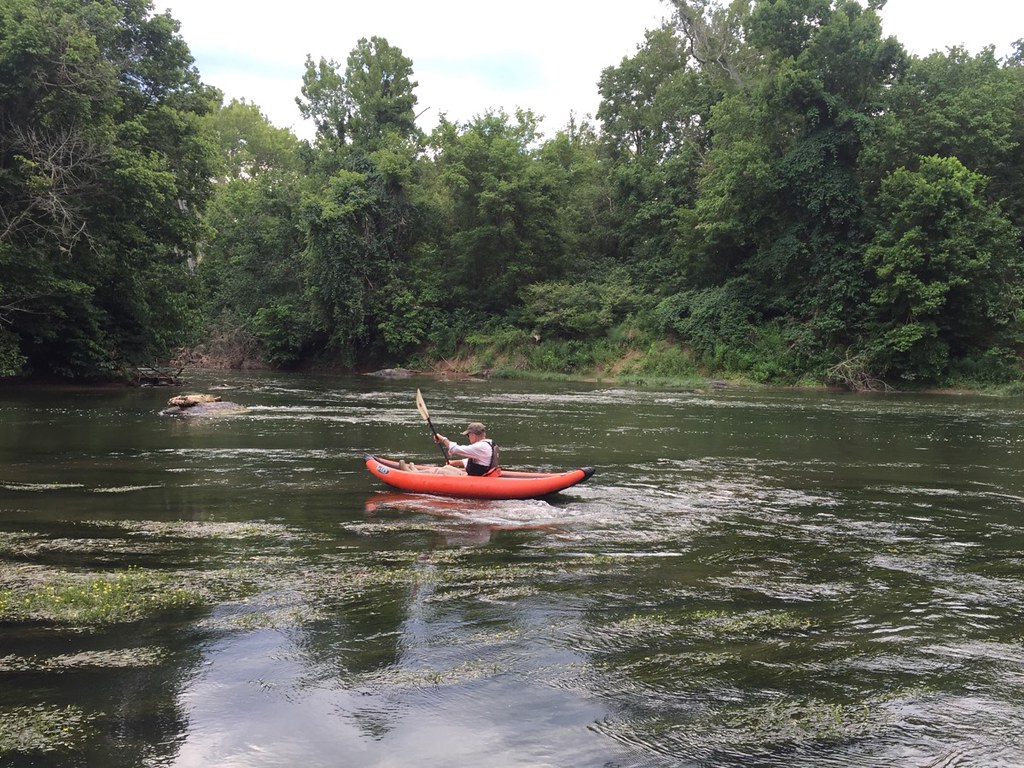A match for cotton, at last?
I’ve always been a stalwart defender of cotton clothing for hot-weather wear. Nothing else felt as comfortable or kept me as cool on desert treks ranging from my Arizona back yard to the Namib. Occasional forays into the world of synthetics invariably ended in disappointment—manufacturers’ claims that their exclusive formulations of nylon or polyester were “as comfortable as cotton” simply did not hold up, and struck me as ironic: If you want a fabric “as comfortable as cotton,” why not simply wear cotton? (Sort of like the soy burgers that through cunning combinations of spices try desperately to taste like beef.)
I was well aware of the incontrovertible advantages of synthetics in terms of their quick-drying properties—a benefit for active situations in which the fabric is likely to become soaked with either perspiration or water, as well as for washing clothes in the field. But those did not outweigh the harsh feel of the fabric against my skin. Likewise, the purported superiority of synthetics in wicking moisture away from the skin seemed advantageous for cold-weather base layers but unneeded in hot weather, when cotton’s absorption properties got that moisture to work providing evaporative cooling, and the chill feel of the wet fabric actually felt good on a 100ºF day.
After I posted my brief experience with the (all-cotton) Avedon and Colby Field Shirt (here), I got an email from Adam Rapp of Clothing Arts, makers of the Pick-Pocket-Proof line of trousers and shirts. Once again, Adam’s assurance that his nylon fabric was “breathable and comfortable, unlike most synthetics” left me dubious, but I was happy to try the shirt he offered to send, if only to look forward to dismissing it as yet another almost-but-not-quite ersatz cotton.
And . . . the shirt I received had a “hand”—clothier talk for feel—virtually indistinguishable from cotton: soft, pliable, with a brushed finish that had none of the slightly “snaggy” feel of my previous experience. I tried it on, and the impression held; it felt like a cotton shirt. (In small it also, wonder of wonders, fit my frame—the company offers a wide range of sizes.)
Designwise, I appreciate the simplicity of the PPP shirt—no fancy vents and mesh capes (which always made me ask in the past, why are such things needed if this fabric is so great?), no too-small sleeve pockets, no non-functioning epaulettes. Instead, behind the two basic chest pockets are two concealed zippers that access security pockets behind the main ones. Brilliant—a hold-up artist doing a visual check would miss them entirely. Collar tabs help the collar keep its shape. My only complaint is the shirt’s tails, which are on the significant short side for staying tucked in. (Well, one other: Like all synthetic shirts, this one seems to stain permanently more readily than cotton. The available khaki color would be a better bet for most field use.)
So standing around in the PPP shirt gave no indication that it was anything but cotton; how about moving around outside? I wore the shirt on a morning bicycle ride in Tucson’s summer. After 20 miles the temperature had hit the low 90s, I was perspiring freely—and the shirt felt great. I can’t say it felt like cotton; it was not necessarily worse, just different. A cotton shirt would have felt wet, and the evaporative cooling would have been noticeable as cold wetness against my skin. The PPP shirt wicked well; the result was that my skin felt dryer, giving the impression that I was not as cool. However, the shirt dispersed the moisture so effectively that evaporation was if anything probably greater than in a cotton shirt. As I said, different. Anyone looking at me in both shirts would have immediately noticed a difference: In, say, one of my Filson Feathercloth shirts it’s immediately apparent I’ve been sweating from the darkened wet areas; the PPP shirt by contrast appears dry.
Although this shirt isn’t made specifically for water sports, I nevertheless took it kayaking down the Potomac River, where nylon’s superiority to cotton is inarguable: Even though by the time we hit the take-out the shirt was quite wet from splashing and paddle drips, before we had the boats and equipment put back in the truck it was completely dry.
My conclusion? The Pick-Pocket-Proof shirt is very, very close in hot-weather comfort to an all-cotton shirt, even for my atavistic tastes. Combine that with nylon’s fast drying properties, making it an excellent choice for traveling, and I feel I’ve at last found a viable alternative to cotton in an outdoor shirt.
Postscript: Adam also sent me a pair of Pick-Pocket-Proof pants, of which all the things I’ve said about the shirt also apply. The pants are offered in your choice of both waist and leg sizing—increasingly rare in the world of outdoor clothing—and in a range that starts slimmer than my own size and goes up from there. Three cheers for Clothing Arts. Last but not least, the anti-pick-pocket features are really effective: It takes concentration and a half a minute to retrieve a wallet from the hip pocket past the two buttons and the zipper that guard it. Even Apollo Robbins might have a tough time taking your money.
Clothing Arts is here. The PPP shirt is a reasonable $70; the trousers are $125, or $110 if you don't need the convertible-to-shorts feature.


